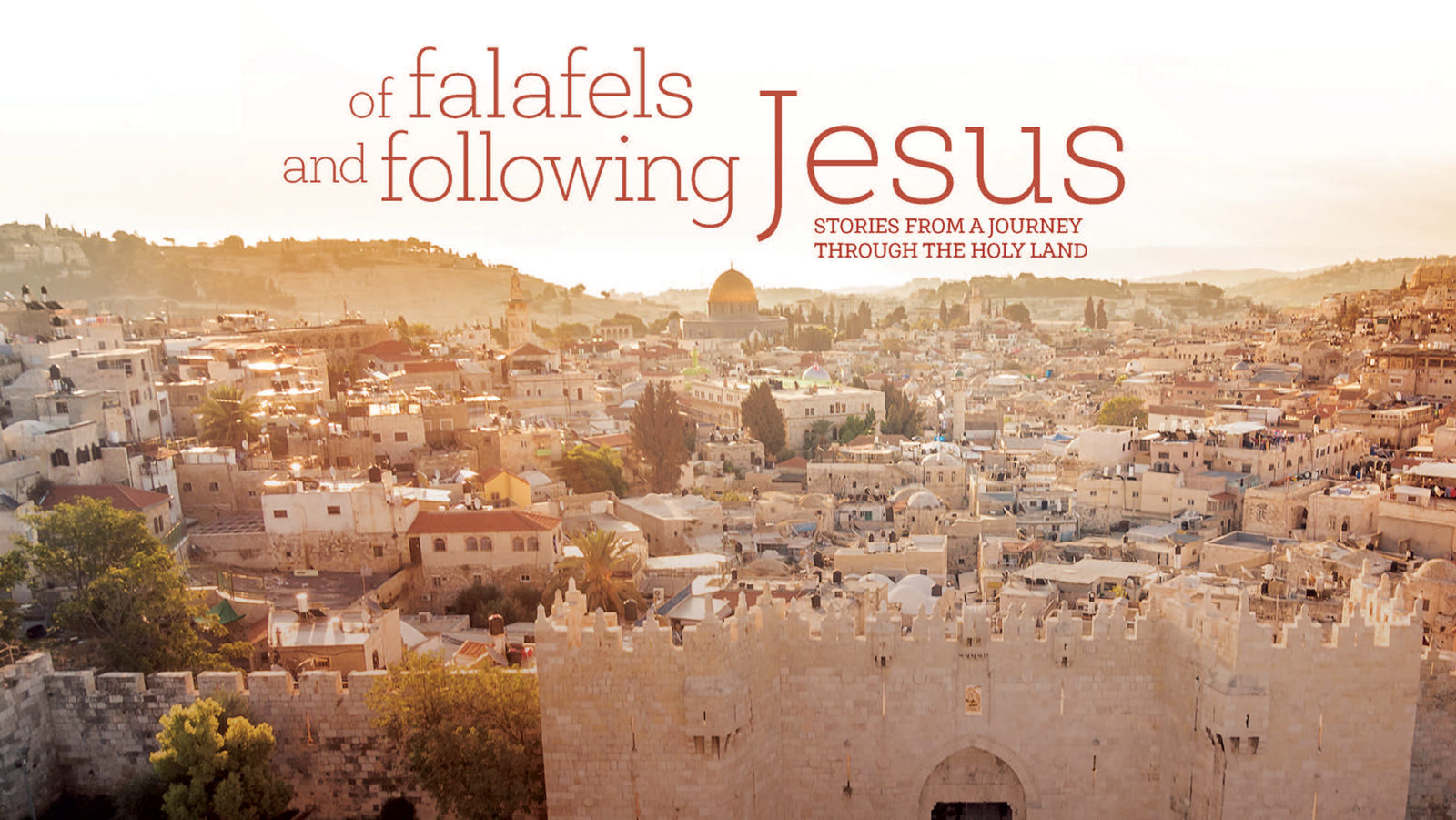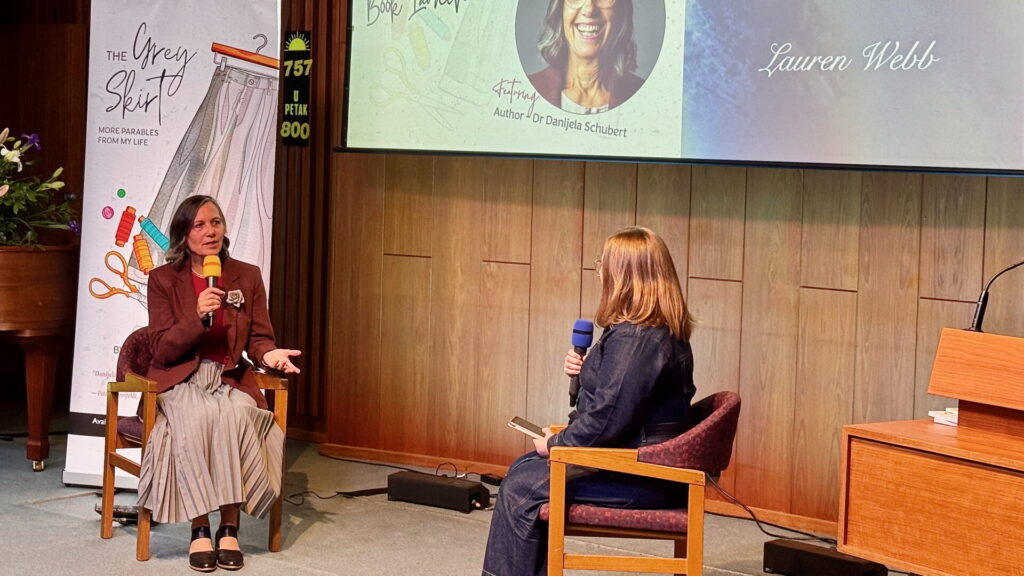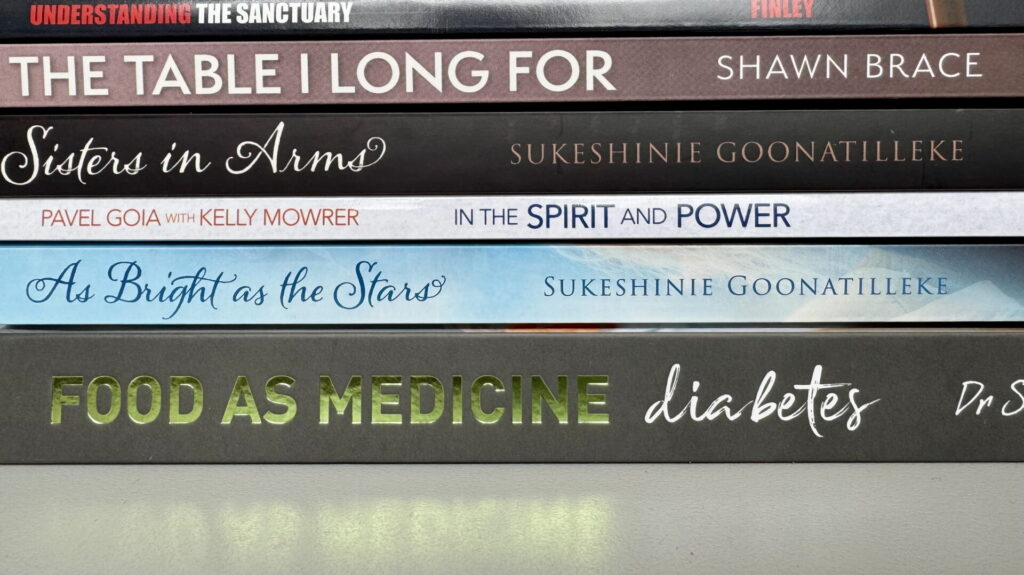Every journey has multiple starting points—as does this one.
One of the key starting points was the stories of Jesus that I was told by my parents from as early as I can remember. Then my teachers of children’s classes at church and school teachers added their voices to re-telling these stories. Over time, with repetition and re-discovery, these stories became some of the most influential echoes in my life.
When I read Cloudstreet years later, I identified with the way Australian author Tim Winton described the resonance of these stories: “Those Bible stories and words weren’t the kind you forgot. It was like they happened to you all along, that they were your own memories. You didn’t always know what they meant, but you did know how they felt.”1 Of course, the risk that comes with such familiarity is that it can be hard to hear them anew—and that these comfortable stories should also make us uncomfortable.
Which brings me to the next starting point. I had not previously had any opportunity or desire to visit the “Holy Land” and in my mind I had resisted the idea, perhaps jaded by the clichés of too many evangelists’ slide shows. But in early 2013, I was invited by my friend Andy Nash to join a trip he was leading to Israel. Andy then taught journalism and religion at Southern Adventist University, but after a life-changing and faith-affirming trip he took to Israel at a key point in his life,2 he has been regularly leading groups to share in that experience of discovery and re-discovery.
It was January and Andy had a couple of places to fill in the group he was leading in May that year. He needed an answer that week.
I was hesitant about the potential for places much-loved in my imagination—from the stories of my childhood and since—to be obscured by the “reality” of souvenir sellers, tour buses, the crush of pilgrims and the assorted gimmickry of holy tourism. I doubted whether the places would have the strength of character or atmosphere with so many overlaid centuries, traditions and contemporary distractions to offer an “authentic” or even useful experience or insight. And as my wife and I discussed it, we pondered the inevitable questions about the cost of such international travel and the safety concerns in what is portrayed as a constantly volatile and violent part of the world.
However, in the previous year, Andy and a couple of other respected friends had each independently and eagerly told me about trips they had taken to Israel and other “Bible lands” and the boost their respective trips had been to their faith, their interest in the Bible and their spiritual focus. The cumulative effect of their enthusiasm meant that I was more open to considering the opportunity when it arose.
After vacillating between enthusiasm, apathy and what else we could do with such international travel, my wife and I decided the possibilities—particularly in light of our friends’ testimonies—outweighed the risks. We booked our places as part of the tour group, worked out how far our frequent flyer points might get us and put it in our diaries.
A few months later, we found ourselves exploring Israel with 51 others, most of them from the United States. Our first major stop was four days in and around the Old City of Jerusalem—and my uncertainty and questions returned immediately.
Amid the historical and holy places, the competing church bells and calls to prayer, the seemingly endless markets, the crowds of tourists, pilgrims and worshippers, I was still wrestling with why I was there and what I hoped to gain by our decision to be part of the crowds and the craziness.
Many of the “holy” sites in Jerusalem left me feeling uncomfortable. As C S Lewis’ narrator in Till We Have Faces asks, “Why must holy places be dark places?” Not only were these usually the most crowded and the most contested places, they also were often enclosed in one way or another, controlling access to them and excluding those considered undesirable or not part of the privileged group. And from where I observed, the faith in the holiness of these sites—the belief that, by visiting this place or touching that stone, a pilgrim is able to access or even earn some measure of blessing—felt a lot like superstition. As we visited site after site, walking the old streets with our straggling group, my “holy place” discomfort nagged at me.
But I stumbled across something more on the morning we visited the traditional site of the Upper Room in which Jesus celebrated the Passover with His disciples, washing their feet, offering them the bread and wine, and going from there to Gethsemane and ultimately His crucifixion. I had been doing some research and reading around John’s story of the foot washing (see John 13:1–17) for a writing project the previous week,3 so as I walked into that room, I was hit with the power of that story.
I realised we were in Israel not to visit holy places but to rediscover holy stories—stories that have been handed down in ancient texts and communities of faith. As they are told and retold, these stories are accessible and adaptable to all of humanity—they are essential stories about what it means to be human—and, as they come to us, they remind us where we came from, who we are and what it means to follow Jesus in our lives today.
Visiting Israel was one way to re-engage, to re-imagine, to go deeper into those stories. We saw the places in which they happened—or might have happened. We explored the hills, the lake, the wilderness, the city and a taste of the cultures that feature in the stories. And in our group, we re-told the stories. Because of those experiences, those holy stories would be different in their re-reading and future re-telling.
Two years later, Andy invited me to assist him in leading another trip to Israel. I recruited a number of friends and connections from Australia to join the group and co-led some of the site commentary and worships along the way.
Shortly before departing on that 2015 trip, I was contacted by Peter Roennfeldt, someone I had known only a little previously, who asked me to read a book manuscript he had been working on. Peter has been a long-time pastor, evangelist, church-planter and departmental leader in the Seventh-day Adventist Church. Early in his ministry, he visited the Middle East, studied in Jerusalem, later cultivated mission across the region, and has since led dozens of tour and study groups through various parts of the “Bible lands.”
Drawing on his intimate knowledge with the places of the stories of Jesus, his manuscript detailed the method of Jesus’ disciple-making, as He invited, called, commissioned, equipped and empowered His disciples to continue His ministry in the world. It seemed to make sense to read this manuscript while visiting many of the places featured in it. As it happened, during our trip, we also crossed paths on a couple of occasions with the tour group Peter was leading at the same time. It began a valued working relationship.
We launched Peter’s manuscript as the book Following Jesus4 in early 2017—and we have since published two more books together. As his editor, I have been privileged to read his material more closely and more often than I suspect anyone else ever will. I have also been able to make some small contributions to them in the editing processes and then to share them with thousands of readers.
Working with Peter and his books has given me new perspectives on the stories of Jesus. As historian and friend Lisa Clark Diller would remind me, the stories of Jesus are not merely stories but specific history—real things that happened in real times and real places. But Peter would add that these stories are also models and methods for what it means to live as a disciple of Jesus in our own lives, in our own times and places today.
During our trip in 2015, I talked with Andy about the idea of writing a book about the journey through Israel, with the intention of trying to share some of the experience with people who might not have the opportunity to visit these places or who might be curious about what a trip such as this might offer. For others, it would remind them of a once-in-a-lifetime trip and offer a different perspective on the stories and places they have experienced in their own ways.
Having worked with Peter and his books for the previous three years, the opportunity to travel with him in these places he knows so well was appealing. While the stories and perspectives in this book are based on my experiences and reflections, as tour leader and book author, Peter is a strong influence and I am grateful for his support of this project. I also shared this trip with a group of fellow Australians, and their voices and reflections also contributed to this book, particularly those of Michelle Villis and Brenton Stacey, who have added some of their own reflections and discoveries from their experiences of this journey. I am grateful for their specific additions to this book and for the journey we shared.
I recognise that it has been a great privilege to visit these places on three occasions in the past few years. It is not something that many people get to experience even once. It is not that a pilgrimage to a holy site promises spiritual credit. It doesn’t get us closer to heaven, but it is something that countless followers of Jesus have experienced over many centuries in search of a deeper connection with Him and His story. Even many contemporary churches and denominations have sponsored pastors and students, academics and evangelists, on such study tours over the years, seeing value in such experiences.
So this is my attempt to share something of the experiences of these places and their holy stories. May it contribute to your journey of following Jesus and its many new beginnings.
And, yes, this journey also begins with a long plane trip. When you’re from Australia, most journeys do.
Of Falafels and Following Jesus is available from Adventist bookstores in Australia and New Zealand. The book is being launched this Sabbath, March 16, at Fox Valley Community Centre (Wahroonga, NSW, 2.30 pm) and Avondale College Church (Cooranbong, NSW, 7 pm). More information at www.FalafelsandFollowingJesus.com.






